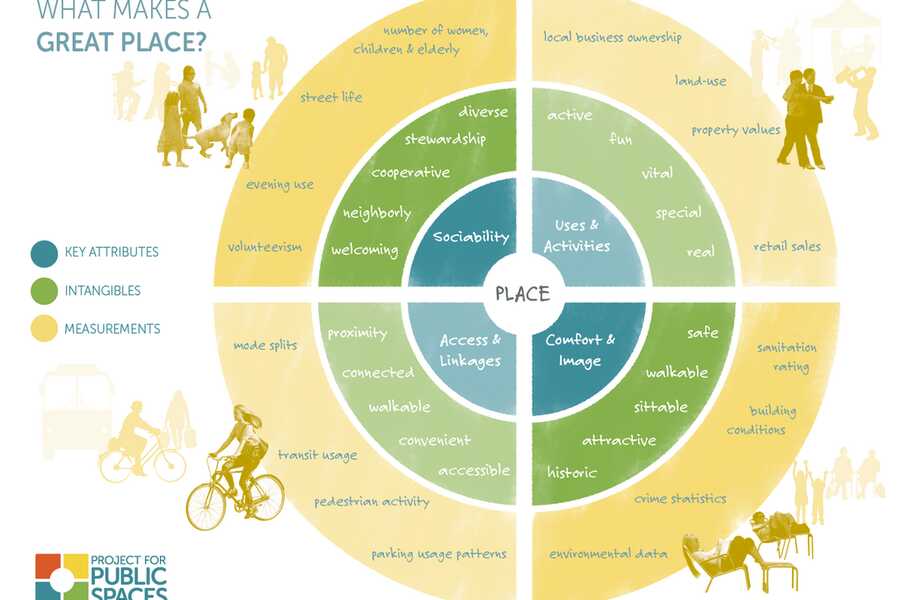The trends that prevail in the public space are closely related to the technologies developed or implemented as one affects the other. if technology means a science intervention, technologies in terms of industrial products are relatively few when we talk about the public spaces. However, smart use of public spaces can result in sustainable developments and improvements to the system.
Major trends and technologies
1. Sustainable public lighting:
In the Netherlands and especially the mainland, a lot of energy is wasted in public lighting. Texel has adopted a smart and sustainable public lighting solution, where the energy consumption is expected to reduce enormously. Instead of leaving the lights run for all the dark hours ( which is even greater during the winter)
The total investment for the project amounts about € 3.5 million. Thanks to the energy savings of 65% and lower maintenance costs, the investment will be recovered within 15 years. Moreover, "Het Waddenfonds" pays about 40% of the investment and "De provincie Noord-Holland" almost 10%. Therefore the investment can be realized immediately. The municipality of Texel and its project partners show that the plan is not only sustainable, but over time will also save money. Therefore, the municipality hopes not only to inspire its own inhabitants to follow the example, but also other governments. (cradle to cradle islands, 2013)
Tailor Made solutions: Darkness where possible. Focus on where needed, when needed and of needed.
- Expected results Texel in 2015:
- 64% Energy saving or more
- 100% Energy Neutral Public Lighting
- Financially neutral implementation
2. Cloud power texel:
Texel has set itself the following four energy goals:
- Reduce energy consumption
- Generate more renewable energy on Texel to supply the energy demand, together as a community
- Use this renewable and locally generated energy on moments that it is available, whilst maintaining a level of comfort.
- Smarter use of the existing energy infrastructure
The cloud power aims at these goals, and currently the project is in the middle of a pilot phase where smart devices are installed at 300 premises in the community to enable reduction of energy use by energy awareness and insight. (A. Lauwerijssen, 2013)
“We are keeping accurate records of how much everyone generates and consumes,” says De Graaf. “All the participants are using innovative technologies such as smart meters and an energy management system for this. These systems are linked together and make it possible to exchange information between users and with the producers”. The community expects to benefit rapidly from the Cloud Power Texel approach’s benefits of a smart network without large scale investment in infrastructure (NL Agency, 2012)
3. Events
Specific areas of texel attract different kinds of users. As seen from the map of week 1, we see various activities taking places in different parts of the island every month. This attracts many tourists and also many companies that can put forth their products to the consumers. However, there are some sites which are also public spaces like the beach and the national park. These are the areas where a minimal intervention is preferred, in order to protect the natural eco-system. The technological developments here are only those which are completely harmless to these areas and in fact, are helping the nature.
4. Placemaking:
More than just creating better urban design of public spaces, Placemaking facilitates creative patterns of activities and connections (cultural, economic, social, ecological) that define a place and support its ongoing evolution. Placemaking is how people are more collectively and intentionally shaping our world, and our future on this planet.
Some designers have given placemaking a new definition by making public spaces multi-functional These trends are prevailing in many places around the globe including in many parts of netherlands. Howevery the scale of this application in the relatively low. Three are many interventions that include a moveable park to create a different atmosphere in the same public space without the need for constructing a special one. This allows the users to probably park their car in the parking-lots and at some points in time, have a green garden space where it enables users to lay on benches and enjoy the sunshine. Park(ing) day for example is one such project in San Francisco which started with occupying one parking space for two hours, which was the term of the lease offered on the face of the parking meter.sometimes, Even Urban farms were placed at these sites. (rebar studio)
References:
A. Lauwerijssen, 2013, the island of Texel towards a sustainable energy future. (http://www.capgemini.com/blog/sustainability-blog/2013/12/the-island-of-texel-towards-a-sustainable-energy-future-0)
Cradle to cradle islands, 2013, Texel first municipality with zero-energy public lighting (http://c2cislands.org/sjablonen/1/infotype/news/item/view.asp?objectID=2015)
NL Agency 2012-, ministry of economic affairs, agriculture and innovation, Cloud Power Texel,- experimenting with intelligent networks. http://www.rvo.nl/sites/default/files/CloudPowerTexel.pdf
Rebar studio, Park(ing) day, (http://inhabitat.com/talking-public-space-and-urban-intervention-with-san-franciscos-rebar-studio/rebar_parkcycle-728/?extend=1)


